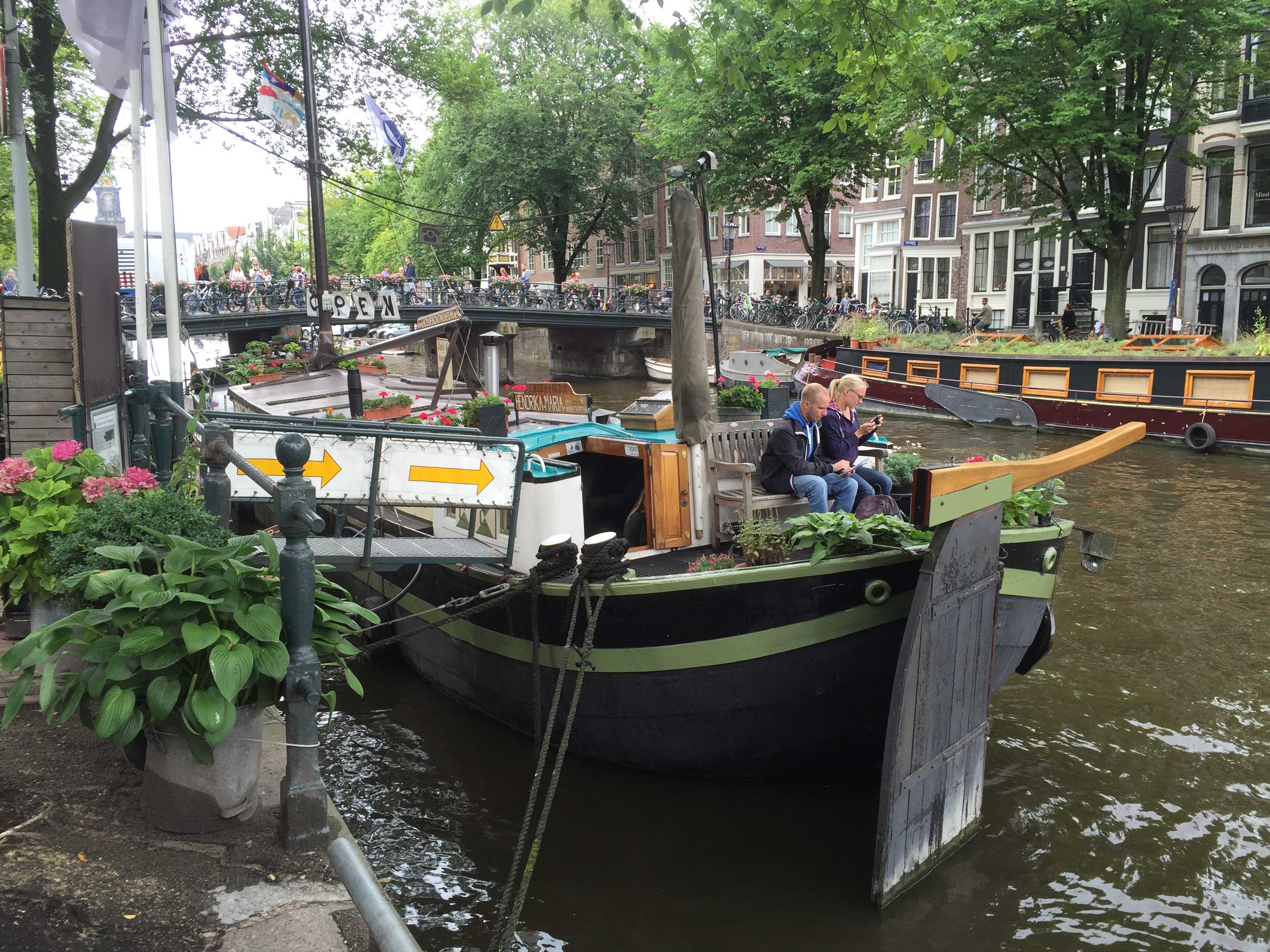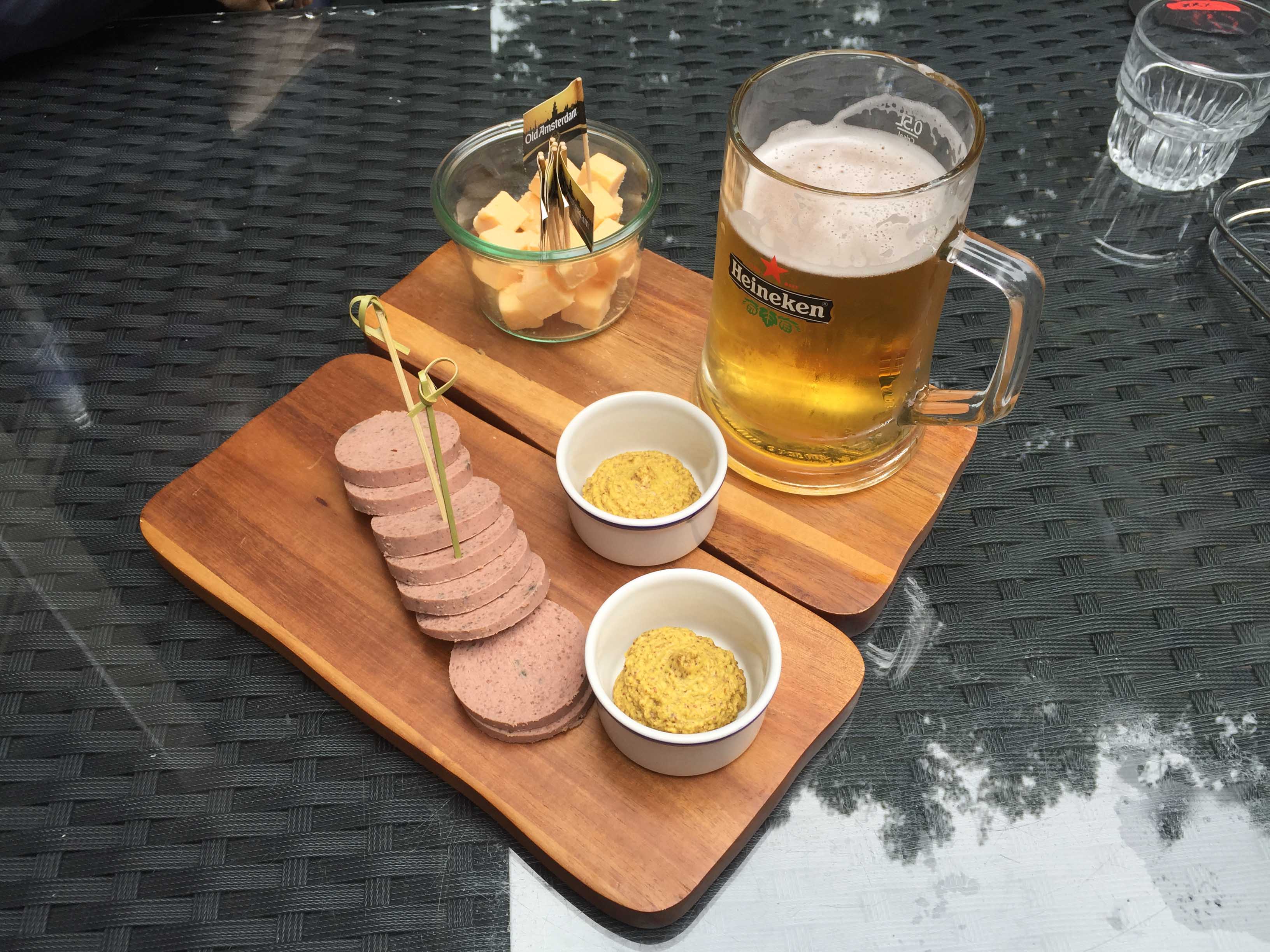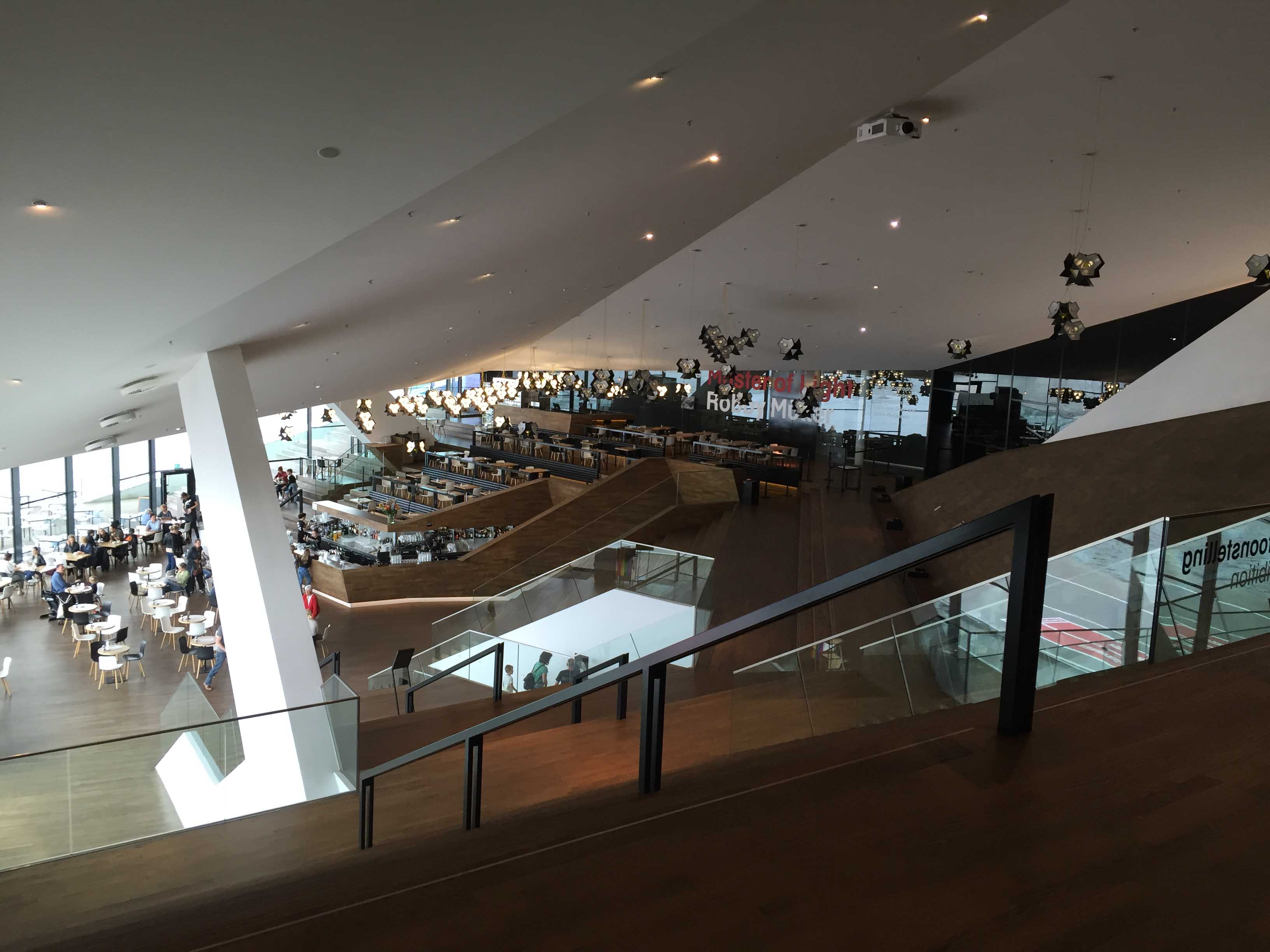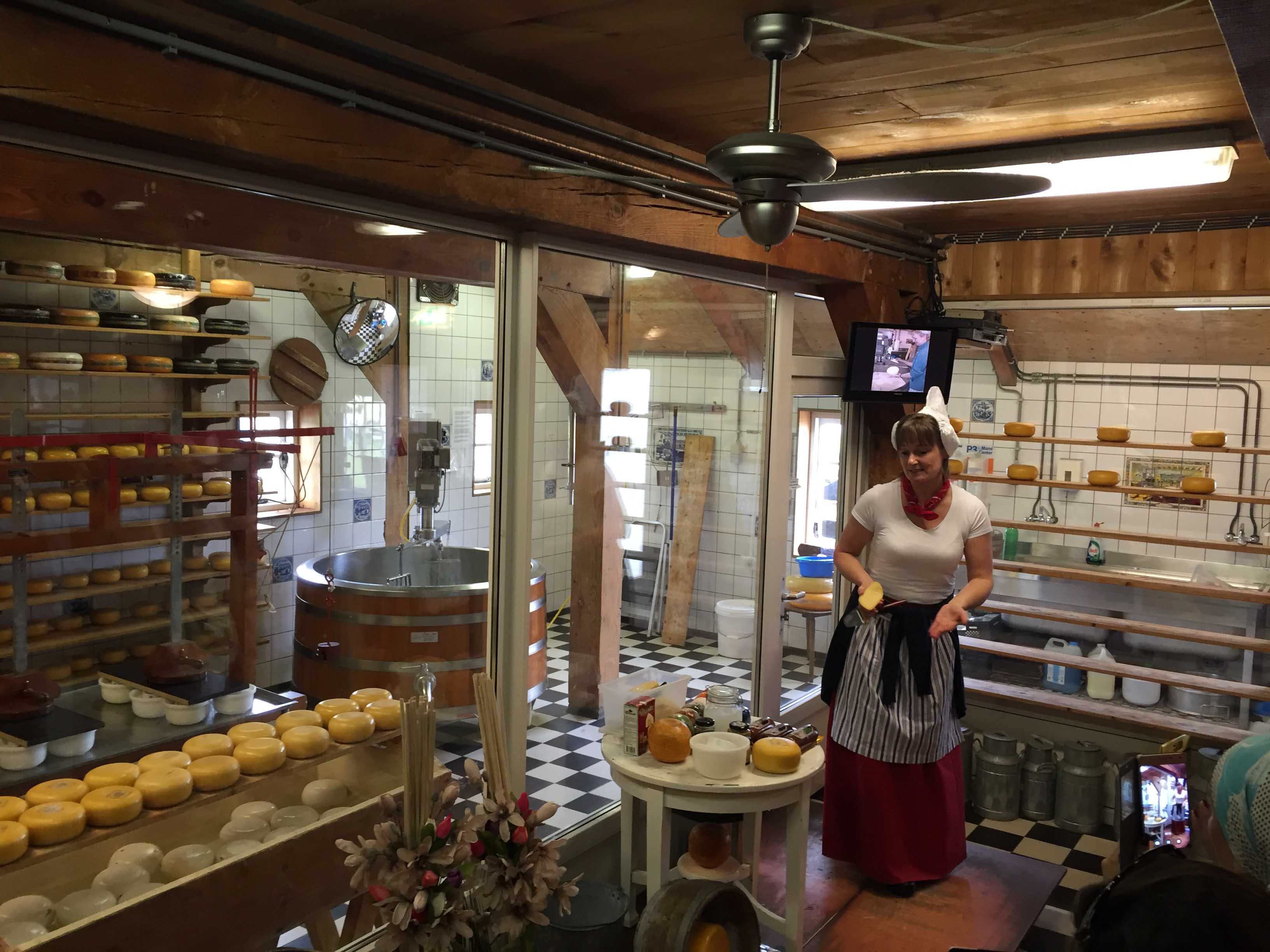Paramaribo, Curaçao, Jakarta. Or, if we spoke the language of taste, we could use words like moksie alesie (super colourful rice with meat, chicken, mixed vegetables, white beans, chili and coconut milk), tutu (a creamy porridge made with black eye beans, nutmeg and sugar) or nasi goreng (traditional Indonesian main course with fried rice, chicken and prawns).
To taste them all, however, we would have to take a long and demanding tour around the globe, going from Suriname to the Caribbean Islands and then all the way towards Indonesia. Alternatively, we could opt for an even more interesting choice: happily strolling around the canals of Amsterdam, searching for one of the many small or big gastronomic temples that, compared to the ethnic restaurants that have lately rooted in most of the contemporary metropolis, represent the distinctive cultural heritage of the city.
Exotic fruit, first-time-seen vegetables and spices landed in Amsterdam in the XVII century from Antilles, Suriname, Java, Sumatra and other Indonesian islands. The intense import/export activities of the Dutch Colonial Empire of the West and East Indies contaminated the culinary shades of the opulent capital Amsterdam, ending up in a sort of “backward colonization”. A history mold by 4-centuries of colonialism was not the only feature that contributed to render one of the most important colonial power such a Creole melting pot with many gastronomic heterogeneity. Amsterdam is also tolerant, open, inclusive, free, multiethnic, multicultural, multireligious and, top of the list, she is a port-city.
Amsterdam IS a port-city. Well different from any ordinary harbor city where, simply, a harbor is connected to a city. The whole city of Amsterdam was ancestrally engineered as port, gluing together her 90 isles, 100 canals and 600 harbors. Take a look at her houses for example: these bend over the canal so that from the top floor (by mean of a characteristic anchoring hooked beam) merchandise, furniture, foodstuff can be lifted and the inclination of the building was calculated to ensure respectful preservation of the façade. Guess how many boats, moored alongside the canals, have already changed their intended use becoming woonboot (floating houses). Imagine how many “food leftovers” remaining from commercial trades have spread over time in the city’s waters to mingle again with local prime material to give life to unreleased culinary fantasies!
The Woonboot Museum (the museum has the size of a boat!) shows the life style of citizens living in floating boats capable of exploiting every single inch of room available.
Next to colonial exotic food, Amsterdam offers her robust North European cooking based on fish (in order of appearance: herrings, mussels, codfish, eels and mackerel), meat and game, vegetables, fruit and cheese. For instance, Edam and Gouda have nowadays conquered international fame and in the city they have been dedicated elegant boutiques that offer interesting and traditional cheese tasting trails ordered by quality and length of ageing. Not to mention beer! Superb malt juice that has made The Netherlands the “country of beer” by virtue of the quantities produced but also consumed. Turned into real touristic attractions, with nothing to envy to the most famous museums, you are offered: the Heineken Experience, a guided tour of the historical Heineken beer industry, which proposes beer tasting (well… of course!); the Brouwerij‘t IJ, industry of biological beers located in the old Funen factory, near the de Gooyer mill, equipped with a pub and outdoor terraces where it is possible to taste traditional beers but also experimental and seasonal beers, cheerfully coming with yummy bites made with eggs and platters of ham and cheese as a sider. To keep up, museums started to offer exciting tasting of beers and local products; for example the restaurant annexed to the Amsterdams Historisch Museum, once an old orphanage in the heart of the historical centre, and the wide and bright EYE Filmmuseum foyer, opened on the sparkling shore of the Ij lake.
Traditional cured hams and local cheese with mustard and a pint of Heineken can be tasted in the restaurant annexed to the Amsterdams Historisch Museum built in the ex-orphanage of the city.
The restaurant-lounge bar inside the EYE Filmmuseum (Delugan Meissl Architect partners) is conceived as the spacious foyer of the movie theatres of the museum with the main point of view facing Amsterdam waterfront on the lake Ij.
However, if you do not want to miss out on the most rooted and most traditional Northern gastronomy, then you will have to head towards the village of Zaanse Schans, only twenty minutes away from Amsterdam. Despite its extreme touristic outfit, it still offers the opportunity to enjoy a rare historical industrial/naturalistic landscape of the Netherlands. It is a unique chance to discover with all your taste buds the traditional Dutch cooking exquisitely revisited in a modern key. The village represents one of the strongest points of the European Route of Industrial Heritage that still preserves some of the thousands of mills that were anciently used to grind wheat, olives, paper, mustard seeds, concrete and even cocoa beans. The enchanting smell of freshly grounded cocoa welcomes you as soon as you step in the village of Zaanse Schans and leads you through a pathway scattered with refurbished mills and small rural buildings where you can actually retrace the ancient agricultural traditions and also have a taste of the famous Gouda, apprehending the original manufacturing methods. The restaurant De Hoop Op d’Swarte Walvis proposes local hunting game served as a dune rabbit terrine caramelized with goose liver and Livar ham, or duck breast with salsify, blueberry, white chocolate, black cardamom, mushroom and Livarot cheese au gratin. An exquisite mise en place of landscape, environment, traditions and innovation.
In the ancient rural and early-industrial factories of the village of mills Zaanse Schans, redressed with a touristic outfit, entertainers involve guests in the traditional manufacturing of diary products, in the transformation of cocoa and creation of handcraft.
Deepen yourselves in Amsterdam, tasting her pure essence of port-city: she will get you involved in an rich and real experience of culinary twists coming from different and distant parts of the planet that have melted within her histories and time. After this, you will wonder: “is there anything better than contaminations able to integrate, stratify and even enrich the genetic code of a city?”
English translation of Ester Badami
Head Image: Set up inside the ancient fabric of homonymous beer, the Heineken Experience is a fascinating interacting tour throughout the history of beer manufacturing started by Gerard Adriaan Heineken in Amsterdam in 1863.
Le Città nella Città sulle rive dell’Amstel
Paramaribo, Curaçao, Jakarta. Se utilizzassimo il linguaggio gastronomico, potrebbero suonare rispettivamente come moksie alesie (il coloratissimo riso misto a carne, pollo, verdure, fagioli bianchi, peperoncino e latte di cocco), tutu (il cremoso porridge di fagioli con l’occhio, noce moscata e zucchero), nasi goreng (il classico piatto unico indonesiano a base di riso fritto, pollo e gamberetti).
Per gustarli tutti dovremmo compiere un impegnativo tour attorno al pianeta, dal Suriname alle isole caraibiche e spingerci fino all’Indonesia. Oppure potremmo scegliere un’alternativa forse più interessante: passeggiare comodamente tra i canali di Amsterdam alla ricerca di uno dei suoi tanti piccoli e grandi templi gastronomici che, a differenza dei ristoranti etnici presenti ormai in tutte le grandi metropoli contemporanee, rappresentano un patrimonio culturale identitario della città.
Frutti esotici e verdure sconosciute insieme a ortaggi e spezie – e relative ricette – approdano fin dal XVII secolo ad Amsterdam dalle Antille, dal Suriname e da Giava, Sumatra e altre isole indonesiane; grazie alle intense attività di import dell’impero coloniale delle Indie Orientali e Occidentali Olandesi, di cui la città è stata opulenta capitale, ne hanno contaminato le sfumature culinarie in una sorta di ‘colonizzazione di ritorno’. Ma non è solo una storia di colonialismo, lunga ben quattro secoli, che ha fatto di una delle maggiori potenze coloniali un crogiuolo così creolo di tali eterogeneità gastronomiche; hanno contribuito anche la sua indole di città tollerante, inclusiva, libera, multietnica, multireligiosa e multiculturale e, soprattutto, la sua natura di città-porto.
Amsterdam “è” una città-porto. Non una città portuale dove, generalmente, si trova un porto annesso ad una città; è un’intera città che nasce come porto con le sue 90 isole, 100 canali e 600 ponti. Guardate le sue case: affacciate sui canali inclinano in avanti le loro facciate per poter issare dall’ultimo piano (sempre munito di trave e gancio per le carrucole) derrate, mobili e mercanzie, sicure di non rovinarsi il prospetto; indovinate quante imbarcazioni, ormeggiate lungo i canali, hanno ormai cambiato destinazione d’uso diventando woonboot (case galleggianti); immaginate quanti ‘scampoli alimentari’ residui dei traffici commerciali portuali si siano dispersi nel tempo per la città per poi rimescolarsi con la materia autoctona e dare vita a inedite fantasie culinarie!
ll Woonboot Museum, un museo delle dimensioni di un’imbarcazione, mostra lo stile di vita degli abitanti delle case galleggianti capaci di sfruttare al millimetro lo spazio.
Accanto alle esoticità coloniali, Amsterdam offre anche la sua robusta cucina nordeuropea a base di pesce (in ordine di apparizione: aringhe, mitili, merluzzi, anguille e sgombri), carne e selvaggina, verdura, frutta e formaggi, tra cui l’Edam e il Gouda che hanno ormai conquistato fama internazionale ed a cui sono dedicate in città eleganti boutiques con percorsi di degustazione ordinati per qualità e tempi di stagionatura. E la birra, che per consumo ed esportazione fa dell’Olanda una ‘nazione birraia’: la Heineken Experience (la visita alla storica fabbrica della birra Heineken in città, comprensiva di degustazione) e la fabbrica di birre biologiche Brouwerij‘t IJ presso l’antico stabilimento Funen accanto al mulino de Gooyer (munito di pub e terrazze esterne dove gustare diverse varietà di birre tradizionali, sperimentali e stagionali insieme a gustosi spuntini a base di uova, salumi e formaggi) sono divenuti ormai delle vere attrazioni, al pari dei suoi più famosi musei. E anche i musei ricambiano, offrendo stimolanti degustazioni di birre e prodotti locali come il ristorante annesso all’Amsterdams Historisch Museum, rifunzionalizzazione di un antico orfanotrofio nel cuore del centro storico, o l’ampio e luminoso foyer dell’EYE Filmmuseum aperto sulle scintillanti sponde del lago Ij.
Insaccati tradizionali e formaggi locali, accompagnati da mostarda e dall’immancabile boccale di Heineken, si possono degustare nel ristorante dell’Amsterdams Historisch Museum aperto nell’ex-orfanotrofio della città.
Il bar-ristorante all’interno dell’EYE Filmmuseum (Delugan Meissl Architetti associati) è concepito come l’ampio foyer delle sale cinematografiche del museo con prospettiva aperta sul waterfront di Amsterdam sulle sponde dell’Ij.
Ma per sprofondare nel profondo nord gastronomico, a venti minuti da Amsterdam il villaggio di Zaanse Schans, allestito in formato turistico ma che offre l’opportunità di fruire ancora oggi del paesaggio naturale/industriale storico dell’Olanda, è un’occasione per godere di una cucina olandese tradizionale raffinatamente aggiornata. Il villaggio è uno dei punti di forza dell’European Route of Industrial Heritage che conserva ancora alcuni dei mille mulini che venivano usati per macinare il grano, le olive, la carta, la mostarda, il cemento e persino il cacao. È proprio il profumo irresistibile di cacao che vi accoglie appena entrati nel villaggio e vi guida tra i mulini restaurati e le piccole strutture rurali dove si ha la possibilità di ripercorrere le antiche tradizioni contadine nonché di degustare il famoso Gouda, apprendendone i metodi originari di lavorazione. Qui il ristorante De Hoop Op d’Swarte Walvis propone la selvaggina locale sotto forma di terrina di coniglio delle dune candito con fegato d’oca e prosciutto Livar; o ancora il petto d’anatra con scorzonera, mirtillo, cioccolato bianco, cardamomo nero, funghi e formaggio Livarot gratinato. Una pregevole mise en place di paesaggio, ambiente, tradizioni e innovazione.
Nelle antiche strutture rurali e protoindustriali del villaggio dei mulini di Zaanse Schans, riconvertite a fini turistico-culturali, gli animatori coinvolgono gli ospiti nei processi tradizionali di produzione casearia, di trasformazione del cacao e della fabbrica dei prodotti artigianali.
Immergetevi in Amsterdam assaporandone la sua essenza di città-porto: vi coinvolgerà in un’esperienza intensa e reale di intrecci culinari provenienti da parti del pianeta diverse e lontanissime che si sono intessuti nel suo tempo e nella sua storia; vi chiederete, alla fine, cosa c’è di meglio delle contaminazioni, capaci di integrarsi, stratificarsi e arricchire anche il codice genetico di una città?
Head Image: Allestita all’interno dell’antica fabbrica di birra omonima, Heineken Experience è un coinvolgente viaggio interattivo attraverso la storia della tradizione birraia avviata da Gerard Adriaan Heineken ad Amsterdam nel 1863.



